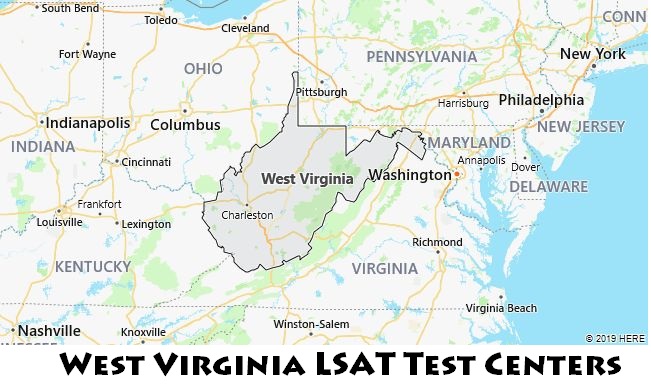LSAT, which stands for Law School Admission Test, is an exam that must be taken by applicants who plan to study in law degree programs of West Virginia. This page provides a full list of LSAT test centers and their city locations within the state of West Virginia. You can select one that is nearest to you. Also offered are the most recent test dates during 2019-2020 academic year. To check detailed LSAT testing locations and dates in West Virginia, please see the following tables.
LSAT Testing Locations for September 21, 2019
| Test Center | City/State | Test Date and Time |
| WEST VIRGINIA UNIVERSITY – BECKLEY | Beckley, WV | 9/21/2019 8:30:00 AM |
| UNIVERSITY OF CHARLESTON | CHARLESTON, WV | 9/21/2019 8:30:00 AM |
| MARSHALL UNIVERSITY | Huntington, WV | 9/21/2019 8:30:00 AM |
| WEST VIRGINIA UNIVERSITY | MORGANTOWN, WV | 9/21/2019 8:30:00 AM |
LSAT Testing Locations for November 25, 2019, January 13, 2020, and March 30, 2020
| Test Center | City/State | Test Date and Time |
| WEST VIRGINIA UNIVERSITY – BECKLEY | Beckley, WV | 11/25/2019 12:30:00 PM
1/13/2020 12:30:00 PM 3/30/2020 12:30:00 PM |
| WEST VIRGINIA UNIVERSITY | MORGANTOWN, WV | 11/25/2019 12:30:00 PM
1/13/2020 12:30:00 PM 3/30/2020 12:30:00 PM |
LSAT Testing Locations for February 22, 2020
| Test Center | City/State | Test Date and Time |
| UNIVERSITY OF CHARLESTON | CHARLESTON, WV | 2/22/2020 8:30:00 AM |
| MARSHALL UNIVERSITY | Huntington, WV | 2/22/2020 8:30:00 AM |
| WEST VIRGINIA UNIVERSITY | MORGANTOWN, WV | 2/22/2020 8:30:00 AM |
LSAT Testing Locations for April 25, 2020
| Test Center | City/State | Test Date and Time |
| UNIVERSITY OF CHARLESTON | CHARLESTON, WV | 4/25/2020 8:30:00 AM |
| MARSHALL UNIVERSITY | Huntington, WV | 4/25/2020 8:30:00 AM |

The LSAT exam in West Virginia may be held on weekends or public holidays.
West Virginia Brief History
After the founding of the English colony of Virginia in the early 17th century, European hunters and traders gradually moved further and further west into the Appalachians. In 1671, at the direction of the governor of Virginia, an expedition was sent to explore the western regions of the colony, which reached the Canova River in central West Virginia. The first European settlements appeared on the territory of the “Mountain State” in the twenties of the XVIII century.
In subsequent decades, the development of the region continued, including in 1748-1751, the area of the South Branch of the Potomac River was explored by the future first US President George Washington. In 1751-1752, the famous pioneer Christopher Gist explored the Ohio River Valley. The British planned to create another, fourteenth, colony (Vandalia) west of the Appalachians, but during the French and Indian War in 1754-1763, most of the settlements in western Virginia were destroyed.
The western counties of Virginia were separated from the “old” part of the colony both geographically (by mountains), and culturally (which was largely due to the difference in the origin of the settlers: there were many more Germans in the west), and economically (a more severe climate made it unprofitable to founded on the use of slave labor for agriculture). All this led to the fact that during the American Revolution, the residents of the region turned to Congress with a petition for the creation of another state, “Westsylvania”. This proposal was not supported and the existing status of Virginia was retained. Nevertheless, ideas of secession and self-reliance continued to be popular, leading in the first half of the 19th century to numerous disputes between state legislators representing the eastern and western districts.
In October 1859, one of the most famous episodes in American history took place in West Virginia: a staunch opponent of slavery, John Brown, organized an attack on the federal arsenal at Harpers Ferry. He planned to organize a slave uprising with the help of captured weapons, but was unable to revolt, was captured, convicted of treason and executed.

